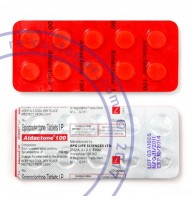Many people with acne have shared positive experiences with spironolactone, particularly those dealing with hormonal acne. For many women, especially those with conditions like polycystic ovary syndrome (PCOS) or acne related to menstrual cycles, spironolactone has proven effective in reducing acne lesions and improving skin texture. It works by targeting and reducing the effects of male hormones like testosterone, which can contribute to excessive oil production and acne.
Users often report that improvements become noticeable after a few months of consistent use. The initial phase can sometimes involve a period where acne may seem to worsen before it gets better, which is a normal part of the adjustment period. Once the body adjusts to the medication, many find that their acne decreases significantly, and their skin looks clearer and more even.
However, experiences vary. Some individuals may experience side effects such as menstrual irregularities, breast tenderness, or headaches. For a few, these side effects might outweigh the benefits, leading them to stop the medication or seek alternative treatments. Regular monitoring by a healthcare provider is essential to manage these potential side effects and to adjust the dosage as needed.
Overall, while many people have had successful outcomes with spironolactone for acne, the key to a positive experience is having a tailored treatment plan and maintaining open communication with a healthcare provider to address any issues that arise during treatment.

